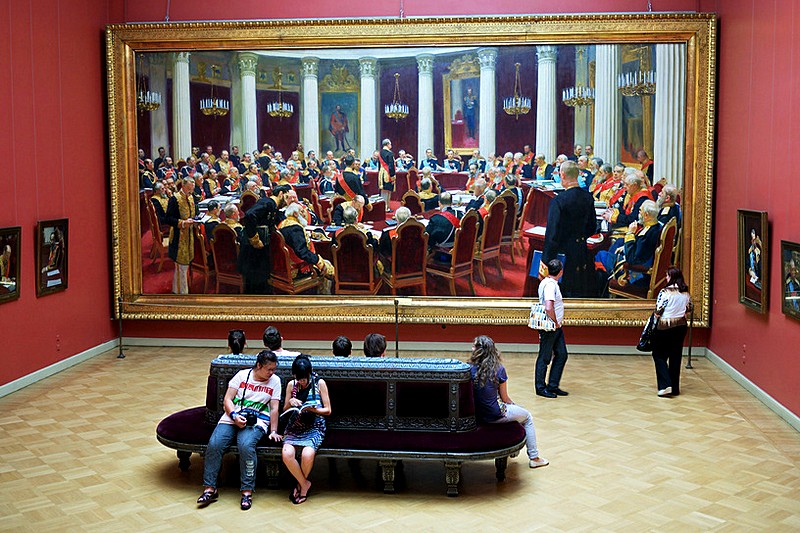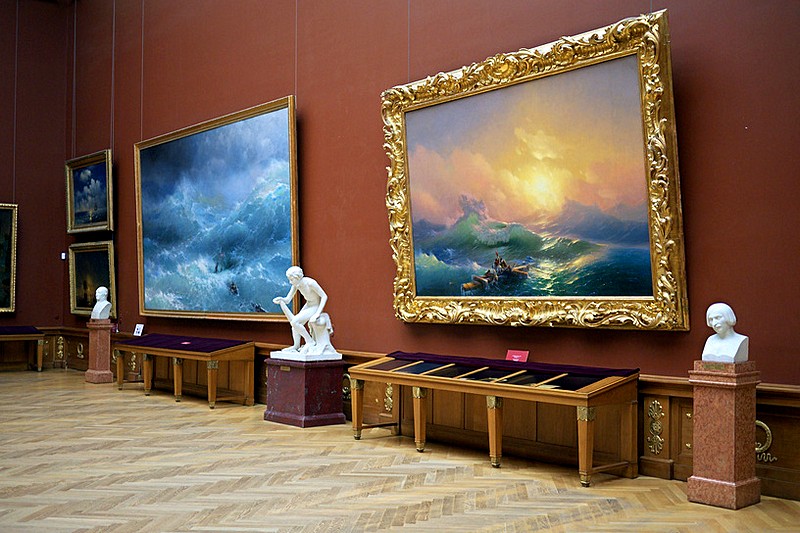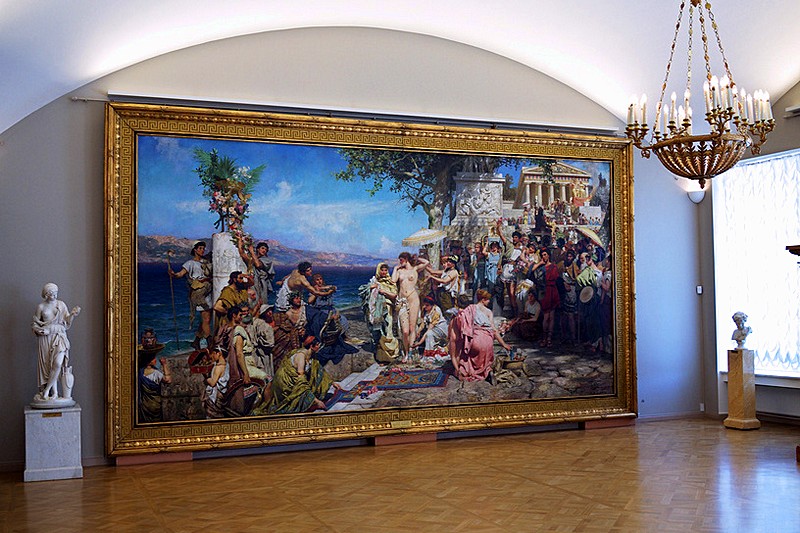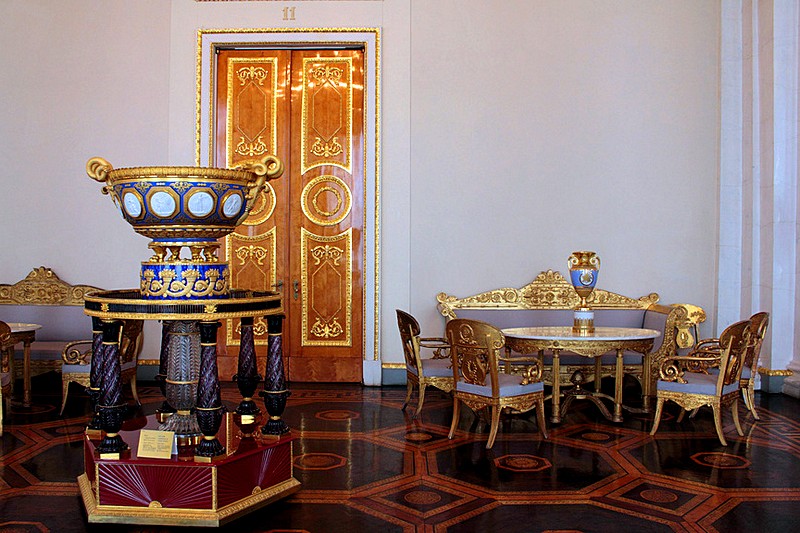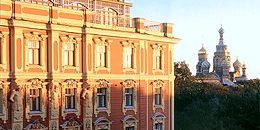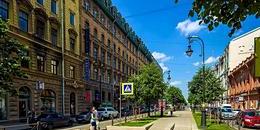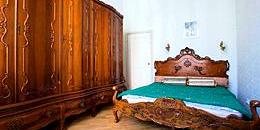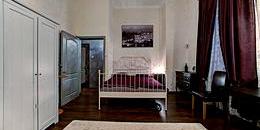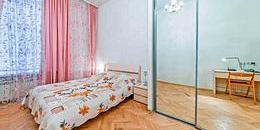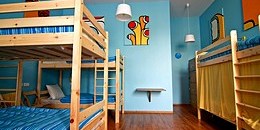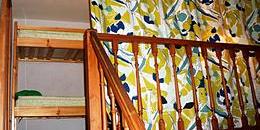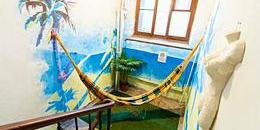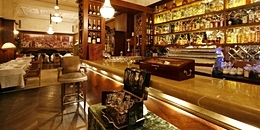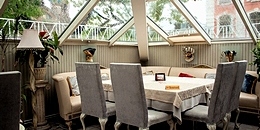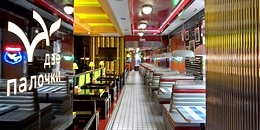Main Collection at the Mikhailovsky Palace
The State Russian Museum is a truly remarkable collection of national art, tracing the development of the visual arts in Russia from its origin in Byzantine icon-painting to the richly varied avant-garde experiments of the early 20th century, when Russian art finally exploded onto the international stage.
While the museum cannot match the Tretyakov for its icon collection, the Russian Museum excels in it's collection of 19th century works, which are housed on the second floor of the Mikhailovsky Palace. The earliest works, genre paintings by the likes of Alexei Venetsianov and Pavel Fedotov, are more interesting for their insights into the lifestyle of Russia's peasantry and bourgeoisie in the early 19th century than for their artistic originality. It is not until the works of the Society of Travelling Art Exhibitions, the "Wanderers", a group of 14 students at the Imperial Academy of Art who in 1863 turned their backs on the prescribed classicism of the Academy and set out to create a populist art for the whole of Russia, than a genuinely original national style appears. Epitomizing their style are Ivan Shishkin, whose meticulously realized forest scenes are some of the most often copied images in Russia, and Nicholas Ge, whose religious and historic works brought a hitherto undreamed of realism to their subjects.
Ilya Repin, one of the second generation of the Wanderers, and widely considered to be Russia's greatest realist painter, is very well represented in the Russian Museum, and his portrait of Leo Tolstoy in peasant dress and the gigantic Ceremonial Meeting of the State Council, 7 May 1901 are particularly impressive.
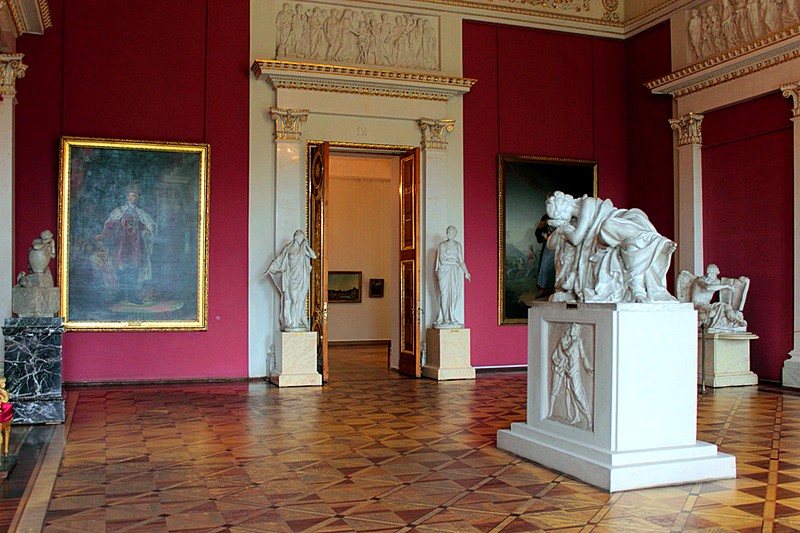
The last great painters of the 19th century continued the traditions of the Wanderers, painting historical scenes and landscapes in a strictly realist style, informed by a powerful sense of social justice and liberal patriotism. However, elements of mysticism and symbolism began to play a more and more important role in the works of artists like Vasily Surkov and Viktor Vasnetsov, both of whom specialized in colourful, often violent, historical scenes.
Similar themes are to be found in the works of the artists represented in the museum's Rossi Wing, including Vasily Vershchagin, whose fascinating scenes of Central Asia and the Middle East are richly exotic and caustically brutal. Another highlight of this section are the canvases of Arkhip Kuindzhi, whose laconic landscapes vividly capture the rarest nuances of colour and light.
In the first decade of the 20th century, Russian art experienced a flowering of talent and experimentation that propelled the national school into the international artistic conscious. Combining medieval Russian traditions - both of icon-painting and folk art - with the influences of Western European modernism, Russia's avant-garde artists demonstrated extraordinary diversity, wealth, and innovation. Beginning with the lurid symbolism of Mikhail Vrubel, through the historical mysticism of Nikolai Roerich, and on to the restless experimentation of Natalia Goncharova and Vasiliy Kandinsky and the radical theorizing of Kazimir Malevich, Vladimir Tatlin, and Alexander Rodchenko, this extended period of rich creativity is superbly represented in the Russian Museum's collection.
| Address: | 4, Inzhenernaya Ulitsa / Ploshchad Iskusstv |
|---|---|
| Metro: | Nevsky Prospekt / Gostiny Dvor |
| Open: | Daily 10am to 6pm. Last admission is at 5.30pm. Thursday: 1pm to 9pm. Last admission is at 8.30pm. Monday: 10am to 8pm. Last admission is at 7.30pm. |
| Closed: | Tuesdays |
| Telephone: | +7 (812) 595-4248 |
| Website: | http://en.rusmuseum.ru |
| Admission: | Adult: RUB 450.00. Students: RUB 200.00 |
| Photo and video: | RUB 250.00 |
| Accessibility note: | The museum is wheelchair accessible (Ramps/lifts). Entrance with wheelchairs from the Embankment of Kanal Griboedova (Benois Wing). Free wheelchair rentals. Please call +7 (812) 314-6424 before your visit as staff assistance may be required. |

